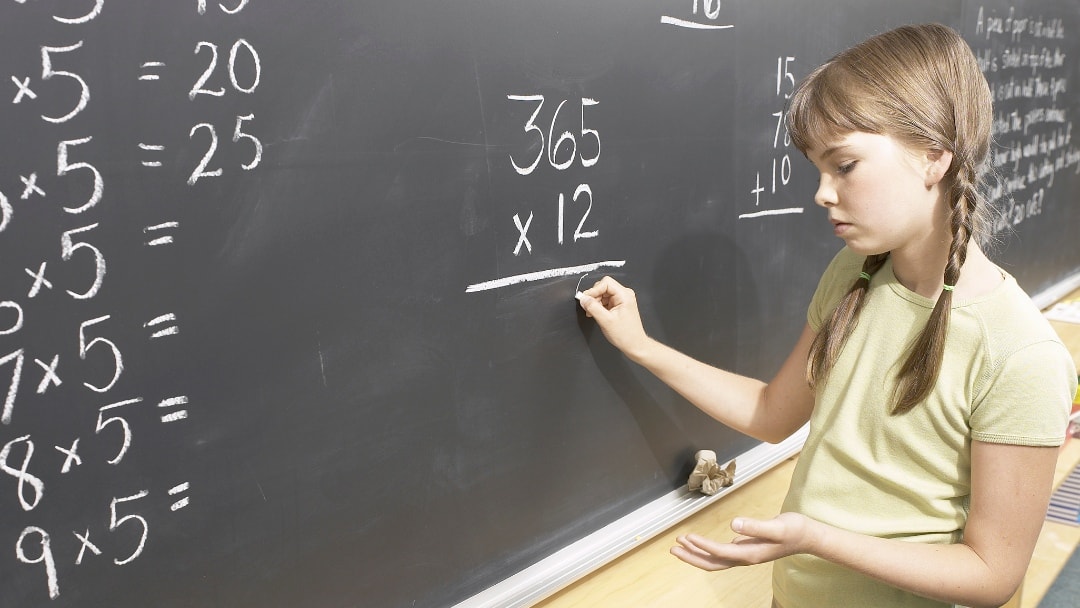In this blog post, Patricia S. Lemer explains how neurodevelopmental movement can help with focus and attention in the classroom.
A while ago, I observed Steven, 6-1/2, in a class of 12 students. He has been identified as “unready” for first and second grade. A lovely teacher directs the children, while an aide admonishes, “Sit still,” “Take your fingers out of your mouth,” “We’re not on that box,” and “If you can’t keep up, you’ll miss recess.” One child lies with his head on the desk. Another taps her pencil. The room is quiet. The teacher says, “We’re going to play “Find the Intruder.” On each desk is a xeroxed sheet with four items, one of which does not belong to the set. On the blackboard, the teacher demonstrates the classification task by sketching an apple, watermelon, banana, and carrot. One student identifies the teacher’s clumsily-drawn carrot as an “ice cream cone” and says it doesn’t belong. He can’t explain why. Another child mistakes the teacher’s ambiguous “cookie” for a “rock.” “Nope!” says the teacher. Children are then instructed to take out a pencil; some have stubs, others, whole pencils. It takes 45 minutes for everyone to complete the lesson. Steven “gets it,” and he beams. Nobody else does, but the teacher stamps a star on each paper, anyway.What’s Wrong With This Picture?
Superficially, this looks like a well-run class with a developmentally appropriate, pre-academic lesson. Unfortunately, it is not. How could the teacher and aide enhance learning? Instead of the negative term, “intruder,” they could use “families and visitors.” They could help the children use the basic senses, such as touch and movement, to facilitate listening and looking. Comprehension of the lesson will improve markedly.What Could Be Done Instead?
They could also. . .Use Manipulatives
Classification is most understandable on a concrete level.- Have children invent ways to identify the object that doesn’t belong, by color, shape, or size.
- Provide actual fruits and vegetables. These children still need the real thing. Those who really “get it” will progress to non-tangible, abstract categories.
- Try another classification exercise, using attribute blocks of different colors, shapes, sizes, and thicknesses. Each child should have a set.
Encourage Oral Stimulation
Oral-motor stimulation is the most basic, primitive road to focus one’s attention.- Let children bring their fingers to their mouths; this organizes their ability to listen and look.
- Preferably, offer non-candy items, such as rubber rings or tubing, crunchy foods, or gum, for kids to chew, bite, or suck while working.
Encourage Large Movements to Make Small Ones Easier
The body needs to organize large motor skills before concentrating on complex small motor skills. Incorporating active movement into lesson plans is key.- Have kids push or carry chairs before sitting down.
- Let kids move. Have them roam around the classroom to find each objects that make a set with a “visitor,” to trick the teacher.
- Assign extra recess, with organized and supervised activities.
Encourage Fine-Motor Skills
- Therapeutic fine-motor activities help the hands and eyes develop as a team.
- Let kids fidget. They fidget because they must. Provide fidget toys, such as Koosh balls or Theraputty.
- Play tracking games that use the eyes. Have pairs of children use flashlights to play “tag” with the beams.
- On worksheets, provide visual cues, such as “green light” dots to show where to begin, or arrows to indicate what comes next.
Encourage Touch
Connecting touch with vision is essential. Feeling and seeing actual objects make it possible, later, to recognize representations such as pictures.- After identifying which object is “different” by sight, ask children to do the same activity with yes closed or by feeling objects hidden in a bag.
- Use objects of different weights and textures as well as size and shape.
Encourage Whole Body Control
Engaging the whole body keeps children focused and alert.- Use a slant-board to angle papers up to the eyes. Children who slump in their chairs need to work sitting on a therapy ball or “Move’n Sit” cushion, or standing at an easel or blackboard.
- Provide big writing implements – chunky crayons, markers, or big pencils that little hands can control. Children ready for pencils can use grippers to adjust their grasp.
Encourage Positive Feelings
Following directions, understanding concepts, and completing tasks are intrinsically rewarding. Stars are an artificial reward.- Say, “Good guess!” when children err, or “You got it!” to help children feel good about themselves.
- Assign homework: “Teach this game to your family.”
About Patricia S. Lemer LPC MEd
Patricia S. Lemer is a licensed professional counselor, holding a Masters of Education in counseling and learning disabilities from Boston College and a Masters in Business from Johns Hopkins University. She practiced as an educational diagnostician for over 40 years.
She was a co-founder and served as Executive Director of the international non-profit organization Developmental Delay Resources (DDR). After DDR merged with Epidemic Answers, she became Chairman of the Board. When she retired from the board, she became an emeritus board member.

She is the author of three books, the most recent of which is Outsmarting Autism, Updated and Expanded: Build Healthy Foundations for Communication, Socialization, and Behavior at All Ages (North Atlantic Books, 2019).
Lemer wrote over 50 editorials for "New Developments," the quarterly newsletter of Developmental Delay Resources (DDR), from 1995 - 2009. When DDR wound down, she wrote an online blog, "After the Diagnosis, Then What?" from 2009-2017. Her articles and blogs have been updated and archived on the Epidemic Answers website.
Since 2019, Patricia Lemer has recorded a bimonthly podcast, "The Autism Detective." In these hour-long shows, she interviews parents and professionals about their experiences in maximizing the potential of individuals on the autism spectrum. Over 100 episodes are available on Spotify and other online platforms. To learn more, go to PatriciaLemer.com and OutsmartingAutism.com
Still Looking for Answers?
Visit the Epidemic Answers Practitioner Directory to find a practitioner near you.
Join us inside our online membership community for parents, Healing Together, where you’ll find even more healing resources, expert guidance, and a community to support you every step of your child’s healing journey.




